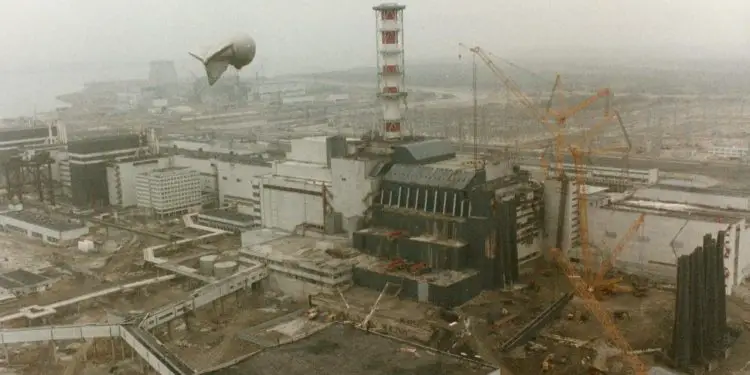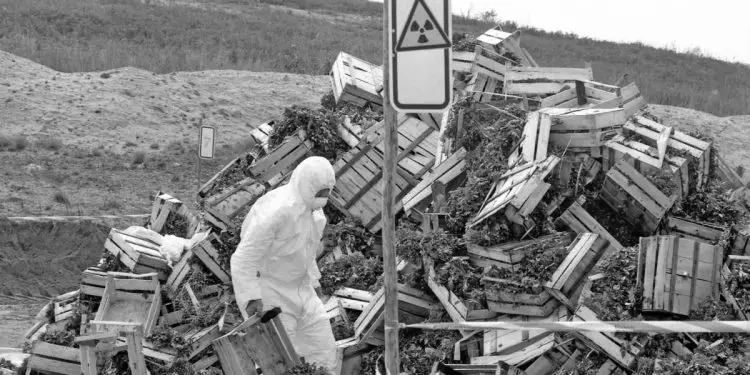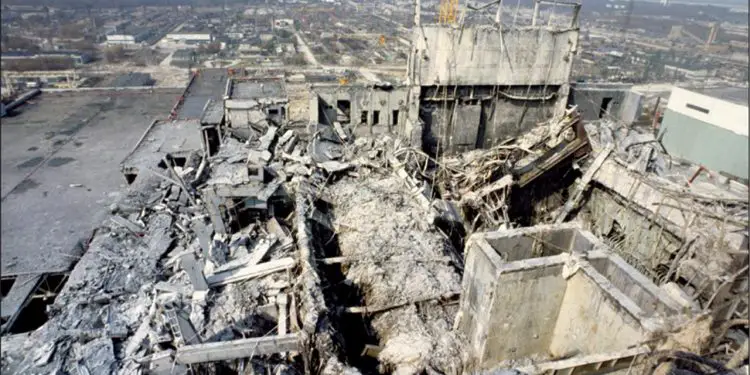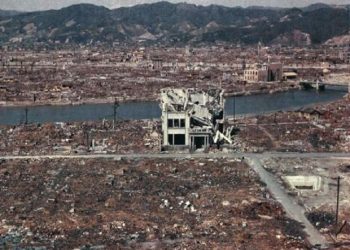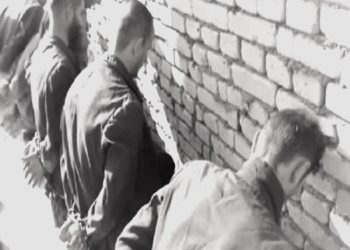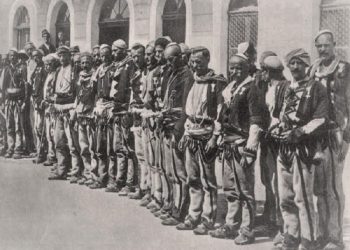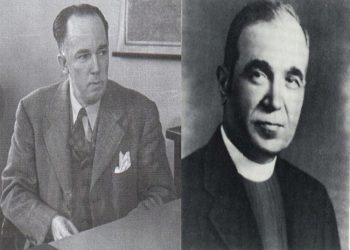By Kreshnik Kuçaj
Memorie.al / The midnight of April 25-26, 1986, can be considered one of the most catastrophic nights in the history of the 20th century! One of the reactors of the nuclear power plant that produced energy in northern Ukraine, suddenly exploded, causing casualties and raising a dense radioactive cloud. This accident is considered one of the most serious disasters in history, both for the consequences and for the number of victims. The dense radioactive cloud began to spread in Russia and Ukraine, and then continued to France, Italy and even Albania. This accident is considered an event that changed the course of history. The radioactive poisoning and the danger that nuclear energy brought, caused many countries to move away from this technology for energy production.
The show ‘DOSJA E’ has broadcast exclusive reports and testimonies that come to the Albanian screen for the first time regarding what happened in the anxious weeks that gripped Albania in 1986…! “Like many other countries, Albania learned the news of the catastrophe that had occurred in Chernobyl late, on the night of April 25-26, 1986. The routine measurement equipment of European countries had managed to detect increased radioactivity, raising the alarm about what had happened, an alarm that reached Tirana through the media, much earlier than the radioactive clouds”, says Professor Edmond Panariti, then part of the working group that was set up to deal with the emergency.
Several global nuclear experiments that were carried out in the mid-1970s had led Albania to set up an entire network of periodic monitoring of the level of radioactivity. The periodic radioactivity monitoring network, which existed since 1977, included 11 control points, set up by the Institute of Nuclear Physics, in cooperation with the Ministry of Defense, through which daily water samples were taken from rivers, especially those communicating with the territories of foreign states, as well as sea water. At the same time, atmospheric deposits were collected at two points in Tirana and Korça. Water samples and those of atmospheric deposits were brought every two weeks to the Institute of Nuclear Physics, where the level and content of radioactivity were determined with a sensitive measuring system.
This type of control for normal conditions was considered sufficient and similar to what was done in other countries. In addition to the measurements made by the Institute of Nuclear Physics, a whole system of less sensitive dosimetric devices was distributed throughout the country and they were used by the army. In addition to the monitoring system, Albania had approved in 1985, just 1 year before the Chernobyl technological accident, an emergency plan in case of a nuclear attack. And this emergency plan would be implemented at the beginning of May 1986, as a result of the sudden change. “The news had reached us in a different way. Radioactivity had started to appear in those countries around, such as: Austria, Czechoslovakia and Poland. The news came out in the media that this had happened, etc. A communication with the International Atomic Energy Agency and they informed us”, says Prof. Dr. Përparim Fuga, former director of the Institute of Nuclear Physics, at that time part of the working group that was set up to deal with the emergency.
“The Swedish and Norwegian service sounded the alarm, because the Soviet Union at that time did not even intend to make it public and everything was kept in a hermetic secret. He did not want the world to know about this serious nuclear incident. But this was impossible, because after air measurements by the Swedish and Norwegian services, it was announced. Thus, this secret could no longer be kept hidden, so the Soviet Union was forced to first notify the Atomic Energy Agency in Vienna and declare a serious nuclear accident at the Chernobyl power plant. Unfortunately, the winds changed direction. So on April 27, 28, 29, the winds moved mainly to the west and north and then the radioactive cloud began to move to Southeast Europe”, says Pr. Dr Edmond Panariti.
“The Institute, upon learning about the accident, had already started taking some measures, despite not having any experience or knowledge. It had started taking air samples. Which, using an air pump, were put into filters and measured every day, since the date of the accident, this monitoring by the Institute began. In May, the filter showed radioactivity,” says Prof. Dr. Përparim Fuga
The arrival of the radioactive cloud from Chernobyl in Albania
The news that the radioactive cloud from Chernobyl had reached Albania caused quite a bit of anxiety in the population, but also in the leadership of the time. Following the emergency plan, the Environmental Protection Commission was immediately established. “The institution had three monitoring networks (which were not set up for the accident, but for other purposes), the emergency network, which consisted of monitoring the air (taking air samples and measuring radioactivity). After this accident, this network was developed and 5 stations were built. One; Kukës, Shkodër, Korçë, Tirana in Vlorë and Gjirokastër, which measured the radioactivity of the air and transmitted it in real time.
There was a network of environmental measurements, there were 11 points located in military units by the river, where samples were taken and once every two weeks, they were analyzed at the Institute of Nuclear Physics. This was a very good indicator because radioactivity was continuously measured. Why in the waters? Because everything went into the rivers or the sea. And the third network was the network of dosimetry measurements of employees who were engaged in activities in the field of Nuclear Physics. These 3 networks were activated immediately”, says Prof. Dr. Përparim Fuga.
“At that time I was a scientific research worker at the Institute of Veterinary Research, in a sector called Radiation Radiobiology. At that time we had special structures that dealt with the studies of radioactive contamination, ionizing radiation in the event of a nuclear war. This war never happened, but this explosion did happen, which we can say was a mini nuclear war, since the treatment methodology is the same, so we were the first in line for this history. We collaborated closely with the Institute of Nuclear Physics, for whom I have a special consideration, for the physicists who dealt with the measurements and studies of radioactivity in soil, water, air and food, since clearly, the radioactive cloud engulfed us”, says Prof. Dr. Edmond Panariti.
The Council of Ministers immediately requested a report on the radioactivity situation in Albania. Here is how the then Minister of Health, Ajli Alushani, who headed the Environmental Protection Commission, described the situation in a report dated May 3, 1986.
“Regarding the Soviet Nuclear Power Plant breakdown, the control immediately initiated by the Institute showed that until 2 p.m. on April 30, 1986, no increase in radioactive activity was felt. Measurements on May 1 and 2 of this month showed a radioactivity level 2 to 3 times higher than the baseline level. This is much lower than the level of danger,” the document read. On the afternoon of May 2, 1986, this level reached 10 times the baseline level. In this situation, the Environmental Protection Commission, based on this data and after consulting the opinions of specialists, reached the following conclusions:
– “Currently, this pollution level does not pose any worrying problems for the environment and the health of the population.
– The progress of the pollution level in the coming days remains unknown for now; therefore the Institute of Nuclear Physics is continuing its observations for accurate data, while the radioactive monitoring network in the districts carries out daily orientation measurements. Faced with this situation, the Environmental Protection Commission decided to take the following measures:
1 – Inform the population through the press, Radio and Television, in order to have clearer knowledge about this problem.
2 – It is recommended to the population to clean fresh vegetables with running water, avoid using water from open sources and reservoirs for drinking. Limiting the long stays of pregnant women and young children in open environments.
3 – For some food products that will be imported from countries that have declared significant contamination, before being given to the population for consumption, the Institute of Nuclear Physics will analyze the presence and level of radioactive substances.
4 – In the form of a survey, water, soil and vegetation analyses will be taken in several districts for analysis at the Institute of Nuclear Physics.
Chairman of the Central Environmental Protection Commission
Ajli Alushani
Tiranë 3 maj 1986.
In addition to the report from the head of the Environmental Protection Committee, the government of the time also requested information from the Institute of Nuclear Physics. On May 3, 1986, the Institute, then headed by physicist Skënder Koja, informed the Council of Ministers about the radioactive material that was also in the sky of Albania, highlighting its nature and danger. In this report, the Institute requested that prudence be shown in the reaction, since the situation was not as alarming as the Environmental Protection Committee thought and even gave examples, saying that this was not the first time that Albania had faced such a problem. The Institute’s request was that the population not be alarmed.
“These increases should be considered very small if we consider that international norms assess as worrying for the population an increase of 100 times, compared to the natural baseline. Even a 100-fold increase can cause serious problems, only if it continues for a long time of many weeks. If we start from this logic, we must hold the opinion that the levels recorded by us today do not represent any danger. The problem that remains unknown is that of the dynamics that the situation will undergo in the coming days. For this, this prediction can be made. Starting from the fact that; the radioactive contamination dough is closed, the general situation should be improving. If any unfavorable combination of meteorological factors will lead to an increase, the latter should be small and short-term. Therefore, we think that there is no reason to worry. Regarding foreign information, on some instructions for the population that have also been given by us, they should be interpreted as follows:
There is theoretically a probability that nuclear radiation causes genetic changes. For the levels mentioned above, these possibilities are extremely negligible, but the moral norms of medicine, as is known, have the duty to eliminate any harmful factor that can be avoided. In fact, other factors that provoke genetic changes, such as chemical substances, etc., are much more important than this new factor that appeared these days and that will be completely temporary”, the report wrote. The prediction of the head of Nuclear Physics, Skënder Koja, in this report, would turn out to be correct because the new factor turned out to be completely temporary. But in Koja’s letter, another concern is understood, the one that Albania had previously experienced, in the years 1976-1977, when China had conducted nuclear tests.
“The amount of radioactive materials that has been released into the atmosphere through nuclear tests that continued until a few years ago, is hundreds of times greater than the amount released by this accident.”And yet, no alarming warnings have ever been made to the population. Our own institute has recorded a very large increase in the amount of radioactivity in the years 1976-1977, after the Chinese tests in the atmosphere, despite the great distance of the explosion site,” Koja’s report read, clearly indicating a tendency not to create further panic in Albania, gripped by fear, just like the rest of the world.
Which cities and areas of Albania were most affected by Chernobyl radioactivity?
“It mainly described the territories of northeastern and southeastern Albania, while the western part of the country was less affected. But the northeast and southeast were affected quite a lot. Given the mainly rugged mountainous relief, the cloud had a tendency to collide with the high plateaus and mountainous terrain. At that time, unfortunately, there was also local precipitation, so what is called; ‘The Leopard Spot Phenomenon’ developed.
So where there was precipitation, there was heavy pollution and where there was no precipitation, there was no pollution at high levels. The highest recorded and reported level of radioactivity at that time was in Rrajcë in Librazhd. The entire Librazhd area, let’s say on May 6-7, 1986, had precipitation and high deposits of radioactive iodine, which was the main element of the radioactive decay that reached Albania, but at low levels, there were also elements such as cesium 134, cesium 137, strontium 189, but 90% of the contamination was radioactive iodine”, says Prof. Dr. Panariti.
“The positive thing was the fact that we had some protection, either because of the distance from the accident site, but especially because of the Alps, the mountainous terrain, caused the radioactive cloud to be oriented mainly in the north-eastern area and it affected very little of the central and not western Albania. Radioactivity appeared in plants, water, air in various products and possible measures were immediately taken, which could be taken at that time”, says Prof. Dr. Përparim Fuga.
Milk contamination phenomenon
May 5th marks a turning point in the impact that the radioactive cloud had on Albania. The situation becomes alarming due to the fact that for the first time in Librazhd, rainfall had caused radioactive particles to descend below and through the grass, pass to the cattle and then to the milk they produced, posing a danger to the population. This is how the situation is described in information number 3 of the Central Environmental Protection Commission.
Information number 3
The Central Environmental Protection Commission met on May 5th at 18:00, to review the dynamic progress of environmental pollution until 16:00 on May 5th and reached the following conclusions: Measurements carried out by the Institute of Nuclear Physics at 16:00 on May 5th show an increase in radioactivity deposited on the surface of the earth. Absolute measurements of milk samples taken in the Tirana market and at the Selita farm showed values of around 400 becquerels, which compared to the maximum permitted norm of 9 thousand becquerels, is considered low. Milk samples taken by the army in Rrajce, Librazhd and measured at the Institute of Nuclear Physics after 16:00 on May 5, showed a high level of radioactivity of 13 thousand becquerels, which is around 45% above the maximum permitted norm for exceptional conditions. These unexpected phenomena are apparently explained by the rains that have fallen in the Rajce area over the past two days.
But considering the weather forecast, the radioactive cloud that has been hovering over our country these days is expected to disappear and the general atmospheric situation should improve. However, in the case of iodine in milk, because its effect is not related to the state of the atmosphere, but to the degree of contamination of the grass, the level may continue to increase temporarily. Given this situation, the commission reached the following conclusions: To extend the sampling of milk and grass in the districts of Librazhd, Pogradec, Korçë, Shkodër, Kukës, Dibër, Bajram Curr, Gjirokastër and Tirana. The results of the analyses will be given on May 7, after 18:00. We propose that the milk produced in the farms of the village of Rrajcë in Librazhd, not be used for consumption by the population, but be processed into cheese and its by-products and put into storage, to be used after 2 months. The situation is being monitored continuously and we will inform you about the results.
“There was definitely air pollution, but it was something that passed quickly, because fortunately from the 4th-5th, there was heavy rainfall that in one way or another, the aerosols landed on the ground and followed a different path, not through breathing. Meanwhile, clear instructions were given on food products, how to wash and clean them, what to drink and what not. For milk, which was sensitive, the data at that time showed that 90% of the milk came from the southern and western parts of Albania and we all know that at that time, we mainly consumed powdered milk, which had nothing to do with Chernobyl, but in those cases when there were high levels, they were banned from use. This was an effect and it was dealt with and I would say that it was dealt with successfully when we had no experience, but also with equipment limitations”, says Prof. Dr. Progress Fuga
“We had a very big problem, to determine the highest level allowed. What would be the level that would be considered dangerous or not. We were totally in the dark because in the food manuals of that time, it was not even thought of setting allowed limits for radioactive contamination. It was about bacterial contamination, insecticides, pesticides, but radioactive contamination, it was never thought of. So we had to determine by agreement within the committee, what would be the maximum allowed level on which we would set the threshold: what is above this level, must be discharged/destroyed and what was below, could be used for public consumption. It was a big debate. We found a provisional reference material, which was released by the World Health Organization, which itself was unprepared, to take a position in this situation.
There, for iodine 131 and iodine 125, the level was set at 2000 becquerels (a unit of measurement for specific radioactivity per liter of milk). If it were said now that the maximum permitted level is 2000 becquerels, it would constitute a scandal in the time we live in, because the American Food and Drug Administration has determined the currently permitted level to be 150 becquerels, so beyond this level, immediate measures must be taken. While at that time we allowed ourselves the luxury of having this level recommended by the WHO. And we used this as a level to decide whether food should be consumed or not. But even though it was a high level, we have exceeded it several times with our measurements. As I remember in Rrajcë of Librazhd, we had radioactivity values that went as high as 6000 or 7000 becquerels per liter of milk. While in meat, the most at risk part was the neck muscles of cattle, because that’s where the thyroid gland was concentrated, where there were very high levels.
When we took the samples to the Tirana hospital, to the “Tetra 1” laboratory, which was involved in performing scans of thyroid patients, the x-ray was alarming, as it involved diluted radioactive solutions inside the meat. Therefore, an order was given to immediately remove and bury the neck part of all cattle that were sacrificed for food. This was undoubtedly implemented in the Tirana slaughterhouse, while in other slaughterhouses in Albania, I am not sure if it was implemented, it remains to be seen. I hope it was implemented, because if meat from the neck part was consumed, it is the same as drinking a radioactive solution because, such was the concentration of radioactive iodine”, says Prof. Dr. Edmond Panariti
The problematic situation with the consumption of milk from small cattle would last until May 19, 1986, when low levels of iodine in milk were recorded, making it unnecessary to ban its consumption in Albania. At that time, there were also clashes between specialists about the level of measurements, where errors with the level of radiation in the products would be accepted, but which officially in the end came to the conclusion that; although the measurements had been made wrong for milk, again even with the new measurements, the decision to ban its consumption would be inevitable.
“In the beginning, the main difficulty was the panic that was created, all of these had an impact, shortages, etc., but the biggest shortage was the lack of standards. There were no standards with which to make measurements. For milk it was easier to build the standard with water, but for plants, meat it was difficult to build standards and make measurements. This may have brought deviations from the measured value to the exact one, but over time, they were eliminated and the measurements were consolidated. The fact is that at the end of all this, which lasted about 1 month with high intensity, the International Atomic Energy Agency gave the standard measurements and they were converted with those we had made. There are also publications by Albanian and foreign authors, which show a convergence between the results achieved by the Institute’s employees and the measurements made in neighboring countries, such as Greece”, says Prof. Dr. Përparim Fuga.
But while in this period the emergency had passed and the radioactive cloud no longer posed a risk of damage through the airways, but only through particles that were deposited on the ground after rainfall, the country is facing a new challenge; that of trade. Many eastern countries were unable to export goods to unaffected countries, arguing that they were contaminated. Albania was also part of the bans, and for this purpose, trade bodies required evidence from the Institute of Nuclear Physics that the products being exported did not contain radioactive materials.
The emergency and anxiety in Albania would last until the end of May. But the new challenge would be that of the radioactivity that had descended to the ground. One of the problems acknowledged in a summary report of September 22, 1986, which provides a summary of the progress of radioactivity in the period June-September 1986, is that of medicinal plants, which were the only ones that showed a problem.
The problem with the export of medicinal plants
“One of the types of valuable exports for Albania at that time was the export of medicinal plants, which our territory has in abundance. Our competition was mainly with the countries of Yugoslavia, which also had medicinal plants and exported them. Circumstances led to the territory of Yugoslavia being more contaminated than ours, and their products were blocked.
In our case, as I said, the north-eastern area; Kukës, Peshkopi, Librazhd, was the one that was most contaminated. Our exports, the first two or three ships that set off for Germany, turned back and were unable to unload the goods there, because they were at a higher level than the allowed radiation. There, the Institute was also given the second task, which was to measure the radioactivity of medicinal plants that were to be exported.
But this was not easy, because there was a lack of experience, some experience had been accumulated from milk and other products, but that was something else. The responsibility was great, because we were talking about thousands of tons that were making their way and it was bad to turn back. Third, we did not have standards; the experience of the “Monte Carlo” technique was used. So a calculation was made that made it possible to calculate between samples of medicinal plants, with a water sample, what was the difference that could come from the composition, and the measurements began.
They started, but they were limited in number, because it was a single device, for a long measurement time, so you could make several measurements per day, while the ship had thousands of tons. A very large volume of work to cope with. It was very difficult. Here the idea of creating a second group was born, who, taking a quantity of material measured accurately with this first method, with special samples, managed to make measurements in large volumes. They built some bags of medicinal plants, whose radioactivity was known and used as standards, to then measure in a rifugio way.
Truck measurements, the entire quantity were measured on the steamer. This made the work much easier, faster. However, the problem for us remained, how accurate were the measurements?! After we had received a “shock”, from the previous period, which had some differences. Finally, after a month, the first results came. All the steamers were discharged, and the difference between our measurements and the German ones was very small, about 6%. I remember it very well, because it was small for measurements of this nature. From this point of view, we can say that the accident was economically beneficial, because as far as I remember, it was a figure of several million dollars, which was benefited because the competitors lost ground due to the high pollution they had, while we benefited from this and the accurate measurements we had”, says Prof. Dr. Përparim Fuga.
The little-known Albanian experiment on radioactivity in 1987
In addition to continuous monitoring of the level of radioactivity in the country, Albania did not stop at taking preventive and management measures for the radiation it had, but also developed its studies further. Edmond Panariti, says that he led an experimental study that began at the end of 1987 and ended in 1988.
“The Food Safety Institute was commissioned by the government of the time to undertake an experimental study to see what the fate of the distribution of radioactive contamination in milk and meat was in the event of radioactive contamination. It was experimental and I was commissioned. I was at the head of a working group of experts and we imported radioactive materials with permission from the Budapest Nuclear Power Plant and we worked mainly with iodine. The plant there was experimental and we ordered radioactive iodine and cesium. But we worked mainly with iodine. Working with iodine is very dangerous, so we had a sector that had all the measures to protect ourselves and we were dressed like astronauts to avoid radiation contamination.
Likewise, the animals were kept isolated. I asked to work on cows, but they didn’t let me, because they are large animals, but they gave me permission to work on sheep and goats. We created simulated contamination experiments, giving iodine capsules by mouth, as if they were contaminated by a nuclear explosion. And then we periodically took milk samples, urine and, in certain sequences, blood samples. Finally, we sacrificed the sheep, to get iodine levels in the thyroid gland and various tissues and created a clear idea of the transmission mechanism, how long the substance remained in the meat and milk, about the measures that needed to be taken and the restrictions in case of a possible exposure, of our livestock”!
“Of course, there were numerous studies all over the world, but we quickly took this story because, the government of the time was on the alert. You know how the phobia of that time was from an attack by imperialists, revisionists, and they wanted to be prepared. This event was a signal that what happened to the plant could happen with an attack. And you know how prepared we were, with bunkers, etc.,” says Prof. Dr. Edmond Panariti.
The change of the political system and the fall of communism would be accompanied by the rapid oblivion of what had caused in Albania, the greatest technological catastrophe in history. And in this context, Albania has not monitored data on what the real consequences were, caused by the Chernobyl explosion in Albania?! “Practically, he highlighted the necessity of institutions of this nature. And in particular the strengthening of monitoring networks. These networks were improved, until ’96-’97, perhaps they functioned a little later, while currently, I do not know whether they function or not. But in my opinion, they should be and they want their care”, says Prof. Dr. Përparim Fuga
“Now it is too late, so many years have passed, and we do not have epidemiological data to determine, since there are no studies on the population that was exposed and what happened to it over the years. What was the incidence of malformations, pathologies, cancers, especially thyroid cancer, compared to the rest of the population, which was not very exposed? Only if we had these statistics, we could really show the effect of this explosion. As long as we do not have them, any guess would be a speculation. But the pollution was, because it was measured”, concludes Prof. Dr. Edmond Panariti. / Memorie.al




